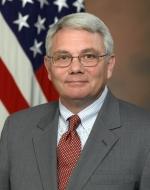Differences in Implementing and Diffusing Lean Six Sigma and Requisite Organization
Speaker A This idea of diffusing Ro in the same sort of manner that Lean Six Sigma has achieved is challenging, I think, on a couple of levels. One is the application is best done from the top down, I...
Transcript of the presentation video
NOTE: This transcript of the video was created by AI to enable Google's crawlers to search the video content. It may be expected to be only 96% accurate.
Speaker A This idea of diffusing Ro in the same sort of manner that Lean Six Sigma has achieved is challenging, I think, on a couple of levels. One is the application is best done from the top down, I think, because it is so threatening to the organization. You really are looking at fundamental operating concepts and practices of an organization, whereas in Lean Six Sigma, you're really sort of looking at what's being done right now. And you can do some things in terms of taking steps out of the process that will change people, but you're essentially enfranchising people who already know what they're doing and helping them do it better. In Ro, I think in the industrial examples I've seen, and we're sort of pioneering a big government example here, there's so much room to change and so many resources dedicated to the old way of doing business that it really has to be a top down effort. And so I don't think it would have been possible to do this in the army had we not had the leadership and the vision of the secretary and the chief to embark on this. Now, that being said, your opportunities for engagement, I think, are fewer and farther between. You have to have the right climate. You also need, I think, a real political sense of how to do it again, it's not really just focused on the workplace. I have seen examples of where Lean Six Sigma has been adopted tactically or surgically in organizations just to fix a problem or two, and it could sort of live in that setting. Ro to me, to really be effective, it's sort of an all or nothing thing. I mean, you have to look at the whole organization, and you have to buy in, and you have to dedicate yourself, such as Sir Roderick did in CRA, to overhauling the organization. So I think the applicability throughout the organization, once you're there again, I go back to the example that I saw in Australia with Rio Tinto, with the Arnor Group, Sam Walsh's group. It's there. I mean, it was 20 years ago since I think Sir Roderick left, and the theory is still there, espoused by young middle managers and even young senior managers who were just starting off at the company then, or who have worked in other areas, other companies, and now are there. And they sort of pick up on the wisdom because it's infused in the organization, I guess, as organizations get more attuned to it through marketing or through it's sort of self marketing, it's not anything you advertise, but companies talk to each other and people move between companies. And it's taken me, I think, 20 years here from exposure to theory to get into a position where I could really do something about it. So I need to draw on a cadre of people, and we're training up some people right now in the army to help us with these engagements. But I do think in Lean Six Sigma, we're on a different diffusion path. That doesn't mean that thinking about how we get out into the academic world and how we get out into the broader business community is not a reasonable thing to do. I do think one of the interesting things that I learned at the last conference in Toronto was how the consulting profession has sort of treated this as a competitive edge. And some of the companies, I think, have kept it quiet, if you will, because they've valued it as a competitive edge in highly competitive businesses. I think with Lean Six Sigma, it is so diffused now and so public, whether everybody needs to do it or everybody needs to do some part of it, or everybody needs to be conversant with it, it's out in the academic community right now. One of the interesting discussions I had was with the head of the Systems Engineering and Mathematics Department at West Point, where we train junior officers and graduate several hundred every year. And I said, well, these guys in your departments, why can't they come out with a green belt and Lean Six Sigma? It's a couple of weeks academics and a project, and we're going to do that. And young people like to have a certificate as they go out into the workplace because it's marketable.
Speaker B Any chance of putting requisite principles into West Point or into the Defense University or into the War College?
Speaker A Well, I think as requisite principals get a track record that's more public, I think that makes it more palatable to, again, in this sort of self marketing notion of successful management theories to be infused into the academic practice. That's a good question for me three years from now to see how successful we are.
Major organizations and consulting firms that provide Requisite Organization-based services





